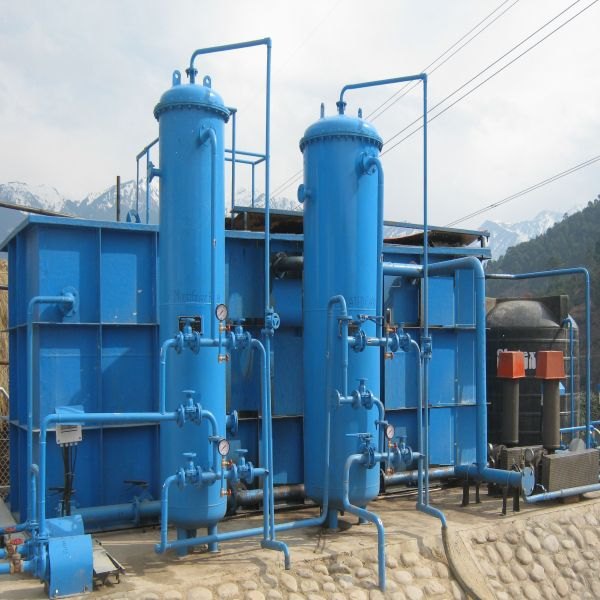STP for Commercial Building

Contact : +919945677068
A Sewage Treatment Plant (STP) for a commercial building is a crucial infrastructure component designed to manage and treat wastewater generated by the premises efficiently. The primary objective of an STP is to ensure that the effluent discharged into the environment meets regulatory standards, thereby protecting public health and minimizing environmental impact. For a commercial building, the STP must be scalable and adaptable to handle varying loads of wastewater, depending on the size and type of the establishment, such as offices, retail spaces, or mixed-use complexes.
The STP process generally involves several stages: preliminary treatment, primary treatment, secondary treatment, and tertiary treatment. In preliminary treatment, large debris and solids are removed through screening and grit removal processes. This is followed by primary treatment, where sedimentation tanks separate floating materials and settleable solids from the wastewater, resulting in a primary sludge that requires further processing.
Secondary treatment is where biological processes come into play. It utilizes microorganisms to break down organic matter in the wastewater. This is typically achieved through aeration tanks and activated sludge processes, where the wastewater is exposed to air, promoting the growth of bacteria that consume the organic pollutants. Alternatively, biological treatment methods like trickling filters or moving bed biofilm reactors may be used, depending on the design and capacity requirements of the STP.
In tertiary treatment, the treated effluent undergoes further purification to remove remaining contaminants and achieve higher quality standards. This stage may involve advanced filtration, chemical treatment, or disinfection processes such as UV irradiation or chlorination, ensuring that the water is safe for discharge or reuse. For commercial buildings, this step is particularly important as it enhances water recycling opportunities and reduces the demand for fresh water resources.
The design of an STP for a commercial building should consider factors such as the peak load, wastewater characteristics, and available space. Modern STPs often incorporate automation and monitoring systems to ensure efficient operation and compliance with environmental regulations. Additionally, energy-efficient technologies and sustainable practices are increasingly integrated into STP designs to minimize operational costs and environmental impact.
Maintenance is a critical aspect of STP management. Regular inspections, sludge removal, and system checks are necessary to ensure optimal performance and prevent operational issues. Properly managed, an STP not only facilitates the responsible treatment of wastewater but also supports sustainable building practices by enabling water reuse and reducing the ecological footprint of the commercial facility.
